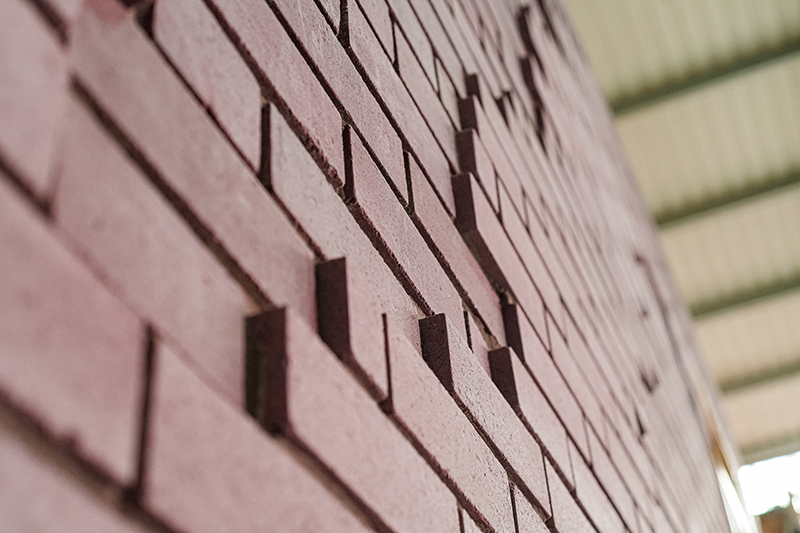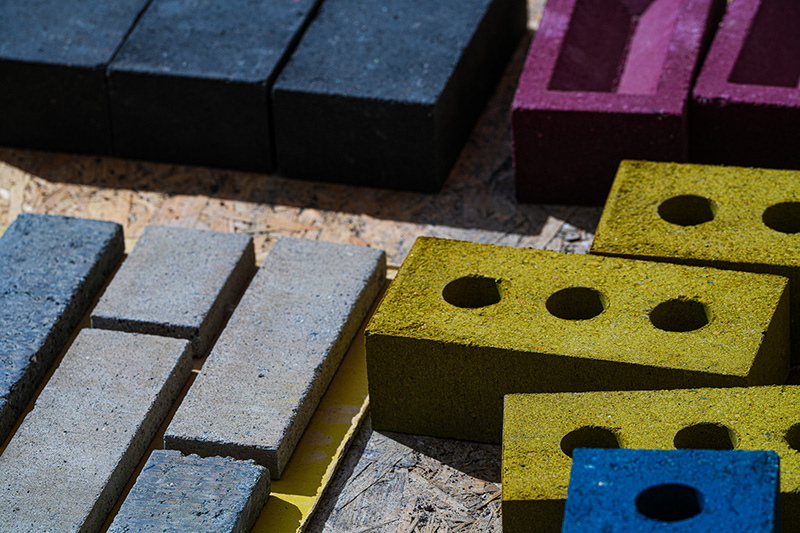
THE K-Briq has evolved from a ‘nice idea’ to a genuine solution for the global construction industry in its quest to meet pressing environmental and carbon targets, its creator has told Project Scotland after the Scottish brick innovation received its latest major accreditation.
Created by Kenoteq, a spinout from Heriot-Watt University, the K-Briq is recognised as one of the world’s most sustainable building bricks. Made from recycled construction materials, the unfired brick is said to produce 95% less carbon emissions than traditional clay bricks.
Certified for use in America through the DrJ Technical Evaluation Report in 2024, the K-Briq has now achieved certification from the British Board of Agrément (BBA) – meaning entire façades can be constructed with the product.
“It means so much,” Dr Sam Chapman, co-founder and executive director of Kenoteq, said about the accreditations. “We’ve been telling the industry about this innovation for years, but until you’ve got that industry stamp, I think understandably the industry is cautious of new products. So, it really gives us that validation, and it unlocks commercial potential and projects that we can get this into at scale.”
The certification has been a long-time coming for Kenoteq, which spun-out from Heriot-Watt in 2019 to progress to the final stage of prototyping, following years of development work at the learning institute. The company is now poised to ramp up production of the K-Briq from its East Lothian factory from around 10,000 K-Briqs a week to 10,000 per day. The ambition is to gradually work up to 20,000 per day.
Kenoteq can create recycled bricks within 24 hours of processed construction waste arriving at its factory.
The most common use is expected to be on masonry and other building façades, with public sector organisations and developers in London described as showing a particularly strong interest in the product. Educational estates, large scale office buildings, and major urban regeneration projects are tipped to be among early adopters.
Revealing that the company has also been in discussions with housing associations, Dr Chapman said the colourful aesthetic of the K-Briq allows organisations to showcase their green credentials.

“It can be a real feature element of a building…that can show those companies and associations are considering the environment and working towards the circular economy,” he added. “While it looks, acts, and feels like a normal brick, it’s got such a bigger story because of the low carbon credentials, the material reuse, and this feeds into a lot of upcoming and in place regulations. So, it’s really important for us that it’s themed – and it’s felt both in a physical and emotional way; this product is doing some good, and we really hope that comes through in its use.”
Praising the Scottish construction sector’s belief in the product, Dr Chapman said the industry’s support has been ‘critical’ in evolving the innovation to the point it is at now. Built Environment – Smarter Transformation (BEST) has been a long-time backer, with K-Briqs currently being laid at its National Retrofit Centre as part of an ongoing revamp.
Other key supporters have included resource management specialist Brewster Brothers, Zero Waste Scotland, leading housebuilders, building merchants, and individual thought leaders within the Scottish construction sector.
“There’s been really good support for what we’re doing,” Dr Chapman said. “We’ve had such good coverage, and I think part of that is the desire from the industry and wider economy that they want innovation.”
Support has not only arrived from Scotland and the UK, but also further afield. Dr Chapman explained that interest in America has been fuelled by it being more beneficial, from a carbon standpoint, for projects on the east coast to source materials from Europe by cargo ship, rather than large trucks transporting materials from the country’s south-west.
“We’ve been able to pick up a fair bit of interest and enquires (from places like) New York State – these big areas in the US where there’s a lot of development,” he continued. Dr Chapman said the long-term ambition would be to create K-Briq factories in the USA, as well as other nations that adopt the innovation.
He believes that achieving the crucial accreditations merely represents the end of an important step in the K-Briq journey. “Now the real work begins,” he stated. “We’ve got the accreditation, now it’s all about fulfilling the promises – and that’s the exciting next step.”











